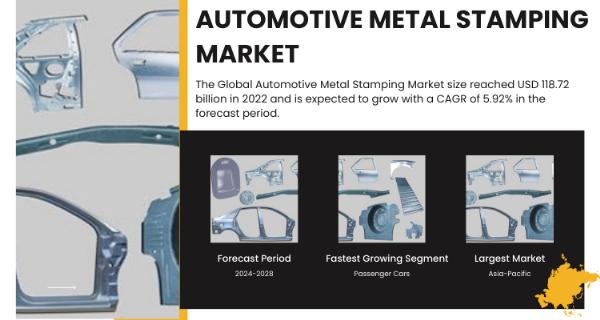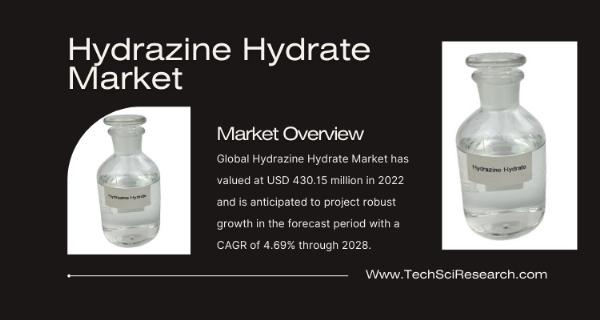 Core Web Vitals Boost – Speed Up Your Site & Your SEO!
Core Web Vitals Boost – Speed Up Your Site & Your SEO!
Passenger Cars Pumps Market- Exploring Global Landscape and Stats
Written by [email protected] » Updated on: June 17th, 2025

According to TechSci Research report, “Global Passenger Cars Pumps Market - Industry Size, Share, Trends, Competition Forecast & Opportunities, 2028”, the Global Passenger Cars Pumps Market stood at USD 6 billion in 2022 and is anticipated to grow with a CAGR of 5.95% in the forecast period, 2024-2028. The Global Passenger Cars Pump Market is a dynamic and vital component of the automotive industry, providing essential systems for the efficient and reliable operation of passenger vehicles.
Pumps in passenger cars serve diverse functions, including managing engine temperature, lubrication, power steering, and braking systems. This market is profoundly influenced by various factors, such as the growing emphasis on electrification and electric powertrains, the need to meet stringent emissions regulations, the relentless pursuit of enhanced fuel efficiency, and the integration of advanced driver assistance systems (ADAS) and autonomous driving technologies.
The shift towards electrification and the rise of electric vehicles have driven significant demand for electric pumps, particularly electric coolant pumps, and electric power steering (EPS) pumps, as automakers seek more sustainable and efficient mobility solutions. Stringent emissions regulations worldwide have compelled manufacturers to develop advanced pump technologies that contribute to reduced emissions and improved fuel efficiency, pushing the boundaries of pump innovation.
Additionally, cost pressures, rapid technological advancements, and variability in regional regulations and consumer preferences pose ongoing challenges to pump manufacturers, requiring them to adapt, innovate, and collaborate to meet the evolving needs of the global automotive industry. The Global Passenger Cars Pump Market plays a vital role in supporting the development of cleaner, safer, and more efficient passenger vehicles that align with the demands of modern mobility and environmental sustainability.
Browse over market data Figures spread through 180 Pages and an in-depth TOC on "Passenger Cars Pumps Market.” @ https://www.techsciresearch.com/report/passenger-cars-pumps-market/19271.html
The Global Passenger Cars Pump Market is a critical and dynamic segment of the automotive industry, providing essential components that enable the efficient and reliable operation of passenger vehicles worldwide. Pumps in passenger cars serve a variety of crucial functions, ranging from managing engine temperature and lubrication to powering steering and assisting in braking systems.
This market is profoundly influenced by several key factors, including the ongoing shift towards electrification and electric powertrains, the imperative to meet stringent emissions regulations, the relentless pursuit of enhanced fuel efficiency, and the integration of advanced driver assistance systems (ADAS) and autonomous driving technologies. The global automotive industry has been undergoing a significant transformation with the increasing adoption of electrified powertrains, including electric vehicles (EVs) and hybrid electric vehicles (HEVs).
This shift towards electrification has profound implications for the Passenger Cars Pump Market. Electric vehicles, in particular, have seen substantial growth due to concerns about climate change and air quality, coupled with advancements in battery technology. As a result, the demand for electric pumps, such as electric coolant pumps and electric power steering (EPS) pumps, has surged. These electric pumps are integral to maintaining the efficiency and performance of EVs and HEVs.
In electric vehicles, electric coolant pumps are essential for managing the temperature of the electric motor and battery pack. These pumps ensure that these critical components operate within their optimal temperature range, enhancing performance and longevity. Without efficient cooling, electric vehicles may suffer from reduced power output, slower charging times, and even potential damage to the battery cells. Electric power steering (EPS) systems have become the standard in many modern vehicles, including electric and hybrid cars. These systems replace traditional hydraulic power steering with electric power assistance. Electric power steering pumps play a crucial role in these systems, providing the necessary hydraulic pressure for responsive and efficient steering control. EPS systems offer advantages such as fuel efficiency, reduced maintenance, and improved driver assistance features.
Pumps play a crucial role in enhancing fuel efficiency by optimizing engine management, cooling, and lubrication. For example, electric water pumps enable precise control of engine temperature, reducing warm-up time and optimizing combustion efficiency. Electric oil pumps provide lubrication to critical engine components, even when the engine is temporarily off, improving overall efficiency and durability. Achieving fuel efficiency targets often involves engine downsizing and turbocharging, which places greater demands on pumps to manage increased thermal loads and pressures. This requires the development of high-performance pumps that can withstand elevated temperatures and pressures while maintaining reliability.
Moreover, as emissions standards become more stringent, automakers are exploring hybridization and electrification options to reduce their reliance on internal combustion engines. This transition requires the integration of electric pumps and the development of sophisticated thermal management systems to ensure the efficiency and longevity of electric powertrains.
While meeting emissions standards and enhancing fuel efficiency are critical objectives, cost pressures and intense price competition are persistent challenges in the Passenger Cars Pump Market. Automakers are under constant pressure to reduce production costs to maintain competitiveness and accommodate consumer demand for affordable vehicles. To achieve cost-effectiveness, automakers often negotiate lower prices with component suppliers, including pump manufacturers.
Furthermore, price competition within the market can lead to a race to the bottom, where manufacturers are forced to lower prices to secure contracts with automakers. This intense competition can affect the quality and durability of pump components, potentially compromising the performance and reliability of vehicles. Striking the right balance between cost competitiveness and product quality is a constant challenge for manufacturers. Additionally, the rapid pace of technological advancements in the automotive industry poses a challenge for the Passenger Cars Pump Market. New technologies, such as electric powertrains, advanced driver assistance systems (ADAS), and autonomous driving, are continually emerging, and pump manufacturers must adapt quickly to remain relevant and competitive.
Major companies operating in the Global Passenger Cars Pumps Market are:
- Aisin Seiki Co. Ltd
- WABCO Holdings, Inc
- Continental AG
- Delphi Automotive LLP
- DENSO Corporation
- Robert Bosch GmbH
- HELLA KGaA Hueck & Co
- Magna International Inc.
- Johnson Electric Holdings Limited
- Valeo SA
Download Free Sample Report @ https://www.techsciresearch.com/sample-report.aspx?cid=19271
Customers can also request for 10% free customization on this report.
“The Global Passenger Cars Pump Market is undergoing a transformative journey shaped by the rising tide of electrification, stringent emissions regulations, and the pursuit of greater fuel efficiency. As electric vehicles gain momentum, the demand for electric pumps, including coolant and power steering pumps, continues to surge, underlining the market's pivotal role in supporting sustainable mobility. Meeting rigorous emissions standards necessitates advanced pump technologies that enhance engine efficiency and reduce carbon footprints. However, cost pressures and price competition challenge manufacturers to strike a balance between affordability and innovation. Rapid technological advancements further propel the industry forward, requiring agile adaptation to evolving automotive technologies. Despite these challenges, the Passenger Cars Pump Market remains a vital contributor to cleaner, more efficient, and environmentally responsible passenger vehicles worldwide.,” said Mr. Karan Chechi, Research Director with TechSci Research, a research-based management consulting firm.
“Passenger Cars Pumps Market – Global Industry Size, Share, Trends, Opportunity, and Forecast, Segmented By Pump Type (Transmission Pump, Fuel pump, Oil Pump, Steering Pump, Water Pump, Vacuum Pump), By Technology Type (Mechanical, Electrical), By Sales Channel (OEM, Aftermarket), By Region, By Competition, 2018-2028”, has evaluated the future growth potential of Global Passenger Cars Pumps Market and provides statistics & information on market size, structure, and future market growth. The report intends to provide cutting-edge market intelligence and help decision makers take sound investment decisions. Besides, the report also identifies and analyzes the emerging trends along with essential drivers, challenges, and opportunities in the Global Passenger Cars Pumps Market.
You may also read:
Automotive Camshaft Market- USD 7.82 Billion in 2022, 7.30% CAGR by 2028
Automotive Radiator Market Heating Up Beyond $13.61 Billion
Automotive Steel Market Steely Resolve- Targets 6.67% CAGR Growth
Europe SUV Market- Exploring the Landscape of a USD 190 Billion Industry
Europe Tractor Market- Driving Growth with $1.15 Billion in 2022, Eyes Robust 5.04% CAGR by 2028
Table of Content-Passenger Cars Pumps Market
- Introduction
1.1. Product Overview
1.2. Key Highlights of the Report
1.3. Market Coverage
1.4. Market Segments Covered
1.5. Research Tenure Considered
- Research Methodology
2.1. Objective of theStudy
2.2. Baseline Methodology
2.3. Key Industry Partners
2.4. Major Association and Secondary Sources
2.5. Forecasting Methodology
2.6. Data Triangulation & Validation
2.7. Assumptions and Limitations
- Executive Summary
3.1. Market Overview
3.2. Market Forecast
3.3. Key Regions
3.4. Key Segments
- Impact of COVID-19 on Global Passenger Cars Intercooler Market
- Global Passenger Cars Intercooler Market Outlook
5.1. Market Size & Forecast
5.1.1. By Value
5.2. Market Share & Forecast
5.2.1. By Pump Type Market Share Analysis (Air to Air, Water to Air)
5.2.2. By Technology Type Market Share Analysis (Supercharged Engine, Turbocharged Engine)
5.2.3. By Sales Channel Market Share Analysis (Front Mounted, Top Mounted, Side Mounted)
5.2.4. By Regional Market Share Analysis
5.2.4.1. Asia-Pacific Market Share Analysis
5.2.4.2. Europe & CIS Market Share Analysis
5.2.4.3. North America Market Share Analysis
5.2.4.4. South America Market Share Analysis
5.2.4.5. Middle East & Africa Market Share Analysis
5.2.5. By Company Market Share Analysis (Top 5 Companies, Others - By Value & Volume, 2022)
5.3. Global Passenger Cars Intercooler Market Mapping & Opportunity Assessment
5.3.1. By Pump Type Market Mapping & Opportunity Assessment
5.3.2. By Technology Type Market Mapping & Opportunity Assessment
5.3.3. By Regional Market Mapping & Opportunity Assessment
- Asia-Pacific Passenger Cars Intercooler Market Outlook
6.1. Market Size & Forecast
6.1.1. By Value
6.2. Market Share & Forecast
6.2.1. By Pump Type Market Share Analysis
6.2.2. By Technology Type Market Share Analysis
6.2.3. By Sales Channel Market Share Analysis
6.2.4. By Country Market Share Analysis
6.2.4.1. China Market Share Analysis
6.2.4.2. India Market Share Analysis
6.2.4.3. Japan Market Share Analysis
6.2.4.4. Indonesia Market Share Analysis
6.2.4.5. Thailand Market Share Analysis
6.2.4.6. South Korea Market Share Analysis
6.2.4.7. Australia Market Share Analysis
6.2.4.8. Rest of Asia-Pacific Market Share Analysis
6.3. Asia-Pacific: Country Analysis
6.3.1. China Passenger Cars Intercooler Market Outlook
6.3.1.1. Market Size & Forecast
6.3.1.1.1. By Value
6.3.1.2. Market Share & Forecast
6.3.1.2.1. By Pump Type Market Share Analysis
6.3.1.2.2. By Technology Type Market Share Analysis
6.3.1.2.3. By Sales Channel Market Share Analysis
Note: IndiBlogHub features both user-submitted and editorial content. We do not verify third-party contributions. Read our Disclaimer and Privacy Policyfor details.
Copyright © 2019-2025 IndiBlogHub.com. All rights reserved. Hosted on DigitalOcean for fast, reliable performance.

















